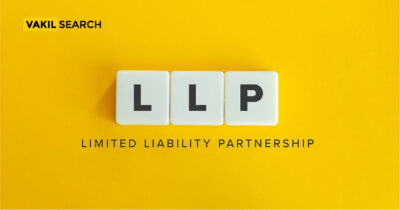Limited Liability Partnerships (LLPs) are known for their unique approach to handling debt responsibilities. This blog explores the dynamics of debt payment within LLPs, shedding light on who ultimately shoulders the burden. We check the concept of limited liability, the role of partnership agreements, and the implications of personal guarantees here.
Limited Liability Partnerships (LLPs) are a popular business structure known for their flexibility and asset protection. However, like any other business entity, LLPs may incur debts in the course of their operations. One of the key advantages of LLPs is the separation of personal and business liabilities, but who ultimately pays the debt in an LLP?
When it comes to financial obligations and debts, an LLP shoulders the responsibility for its liabilities, which essentially implies that the partners are not held personally accountable for any debts accumulated by the LLP. In the unfortunate event that the LLP is unable to meet its financial commitments, the burden of those debts falls squarely on the LLP itself, and the individual partners are not drawn into the equation
The Nature of Limited Liability Partnerships
LLPs combine the benefits of a partnership and a corporation, offering limited liability protection to their partners. This means that the personal assets of the partners are shielded from business debts, with certain exceptions. This concept is foundational to understanding debt payment in LLPs.
Debt Responsibility of Partners
General Rule: In a typical LLP, partners are not personally responsible for the partnership’s debts. Their liability is limited to their capital contributions to the business.
Exceptions: While partners are generally protected from personal liability, there are exceptions. Partners can be held personally responsible for debts if they personally guarantee them or engage in fraudulent activities.
In the scene, where one partner within the LLP incurs a debt, it’s imperative to underline that the other partners are not obligated to assume responsibility for settling that debt. This arrangement proves to be advantageous in safeguarding the personal assets of the partners, as they remain insulated from any potential liabilities stemming from the debts accrued by fellow partners.
The concept of limited liability among the partners is paramount in this context. As previously mentioned, partners within an LLP do not bear personal liability when the business encounters challenges in fulfilling its financial obligations. Their liability remains confined to their respective contributions to the LLP, ensuring that they are only accountable for what they have invested and are not personally exposed to the financial losses incurred by the business.
Capital Contributions and Debt
Capital Accounts: LLPs maintain capital accounts for each partner. These accounts track the contributions made by each partner to the business.
Debt Resolution: If the LLP incurs debts, these are typically paid from the partnership’s assets, including the capital contributions of partners. Partners do not have to dip into their personal assets to settle business debts.
Debt Payment Hierarchy
Creditors: When an LLP faces financial troubles and has outstanding debts, creditors have the first claim on the partnership’s assets. They are paid from the available assets of the business.
Partner Capital: If the partnership’s assets are insufficient to cover its debts, the capital contributions of partners are used to cover the remaining debt. This ensures that partners bear the financial burden collectively.
Partners’ Rights and Obligations
Right to Information: Partners have the right to access financial records and stay informed about the financial health of the LLP.
Decision-Making: Partners may collectively decide how to handle debts, whether through restructuring, liquidation, or other means, depending on the partnership agreement.
The Role of the Partnership Agreement
Customisation: The partnership agreement plays a crucial role in determining how debts are managed within an LLP. It can specify the rights and obligations of partners regarding debt resolution.
Clarity: A well-drafted partnership agreement can provide clarity on the process of handling debts, and avoiding disputes among partners.
Limited Liability vs. Personal Guarantees
Limited Liability: Partners’ personal assets are protected in the absence of personal guarantees. This protection is a fundamental benefit of LLPs.
Personal Guarantees: Partners who provide personal guarantees for the partnership’s debts put their personal assets at risk. This is a significant departure from the limited liability principle.
Debt Resolution Strategies
Restructuring: LLPs can explore debt restructuring options, such as renegotiating terms with creditors or consolidating debts, to manage financial challenges.
Liquidation: In extreme cases, if the LLP cannot recover from its financial woes, partners may opt for liquidation, where assets are sold to pay off debts, and the business is dissolved.
Conclusion
In a Limited Liability Partnership, the responsibility for paying debts primarily falls on the partnership itself, and partners are generally shielded from personal liability. This separation of business and personal assets is one of the main attractions of the LLP structure. However, it’s crucial to understand that while limited liability protects partners from most business debts, personal guarantees or fraudulent activities can expose their personal assets to risk.
The partnership agreement also plays an important role in shaping the debt management process within the LLP. Ultimately, in the world of LLPs, responsible financial management and a clear understanding of the partnership agreement are key to ensuring that the burden of debt is managed effectively and fairly.










